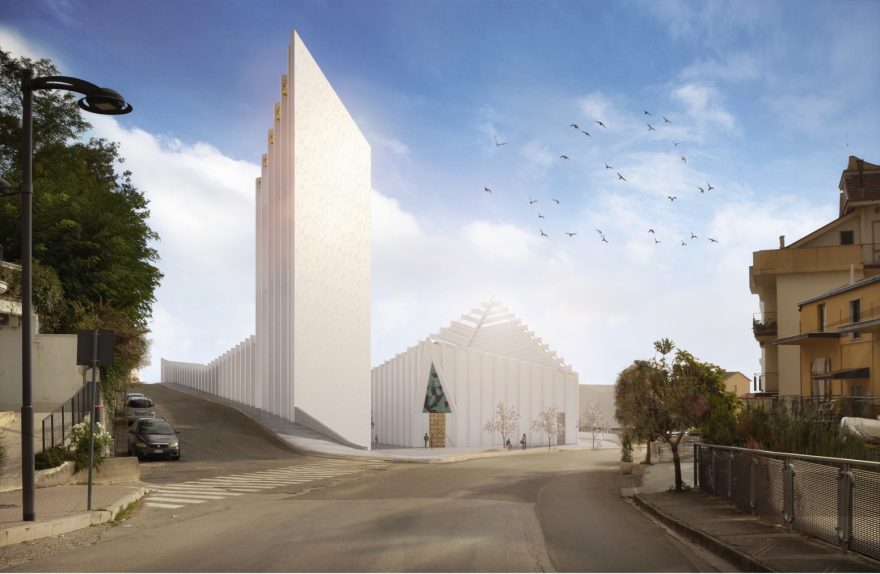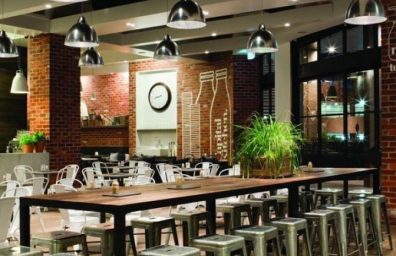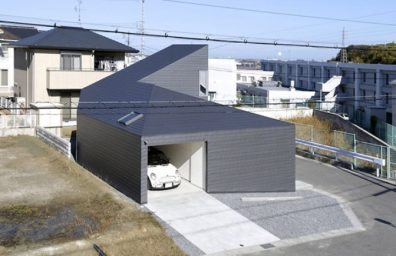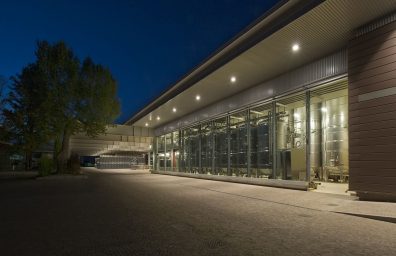The lot subject of the intervention is located in the area of expansion to the north-east / south-east of the ancient urban agglomeration. The land is situated on two different elevations and is cut by a steeply sloping road.
The new expansion lines give the site an ideal hinge dimension between the old country and the new urbanization. The church will have the task of orienting itself, arranging itself, as in history it has always been, ad orientem.
With the façade facing west and the apse area to the east, the church appears as an isolated body. In order to solve the problems related to the practicability and the removal of architectural barriers, the whole area is brought to 0 altitude. The churchyard becomes a place; totally accessible collective space, whose perspective escape, along the bell tower, converges on the portal in an ideal liturgical diagonal.
In the churchyard, a body of water, the symbolic presence of a pomegranate and a row of almond trees reinforce the urban device, filtering and limiting the space.
Recognition of the sacred building
From a distance, from the overlooking hill, from the sanctuary of Santa Maria del Belvedere, the new profiles will be unmistakably recognizable as a church, which will also dialogue with the Mother Church, placing itself in an inferior position.
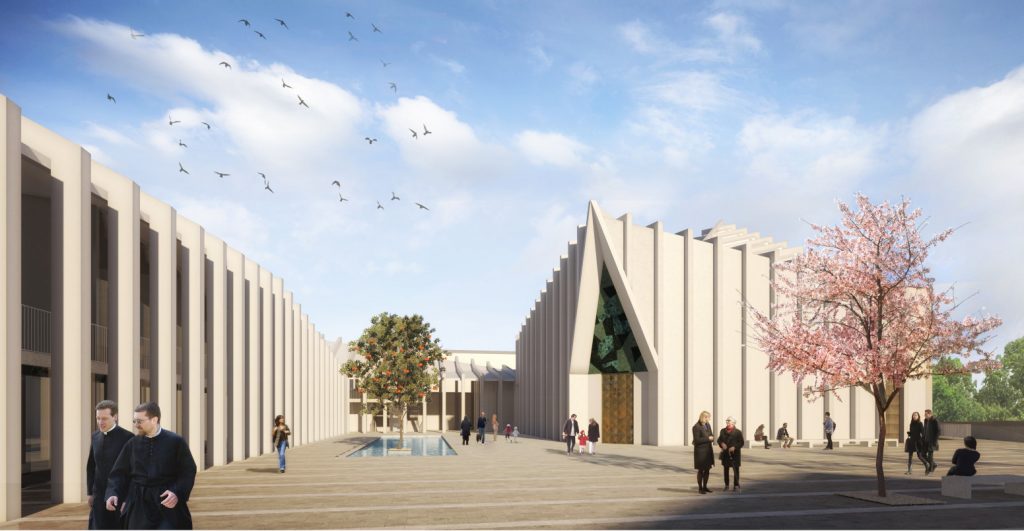
The entire parish complex is conceived as a unitary architectural body in which, following the course of the lot, a series of structural partitions generate the shape of the complex and order its functionality, culminating in the church, whose bands resemble the local buttressed structures and the archetypal compositions typical of the Lucanian countries.
The roof is four-sided. Their trend contributes to creating perspective variations based on the observation point.
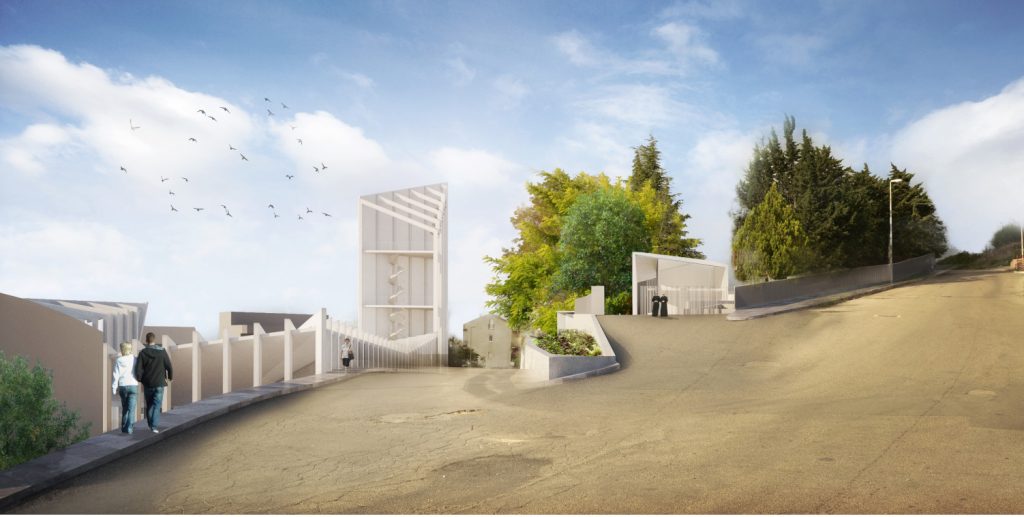
The rectory, located in the highest part of the lot, dialogues with the church thanks to the white and the same formal solutions of the complex.
The bell tower, with five bells, emerges towards the sky on all the horizontality, identifying, becoming an attractor and acting as a meeting point and a belvedere.
Aesthetic, formal profile
The location of the church is the geometric response to the place. The liturgical space is enveloping, rhomboid; composed of structural partitions that contribute to giving an upward push. Everything is white, ethereal, with the exception of the pediment on the west facade, in stone material.
Few but important materials: granite for flooring, wood for confessionals and for benches. The liturgical places are of Apricena stone and decorated marbles.
The light draws, it becomes a building material. We pass by the penumbra of the narthex; in the first light, on the baptistery; up to the great light, on the altar.
The curved apse is a gilded three-dimensional mosaic, which rises in height and seems to dematerialize, become sky, thanks to the use of zenithal light. Even the ceiling, with the side light cuts in the roof, is suspended. The cuts on the walls, instead, give a continuous soft light.
Liturgical plant
The arrangement of liturgical places allows one to be active participants; not mere spectators.
Since the churchyard, the faithful begin their journey towards the event of salvation: the row of almond trees; the pomegranate tree isolated near the waterway; the stele with the quotation from the book of Genesis. Once through the portal, the penumbra of the narthex envelops the faithful; the presence of the baptismal font is luminous womb to be reborn from water and Spirit. Finally, the catechumen will have before it the culmination of its initiatory path: the altar surmounted by the glorious crucifix.
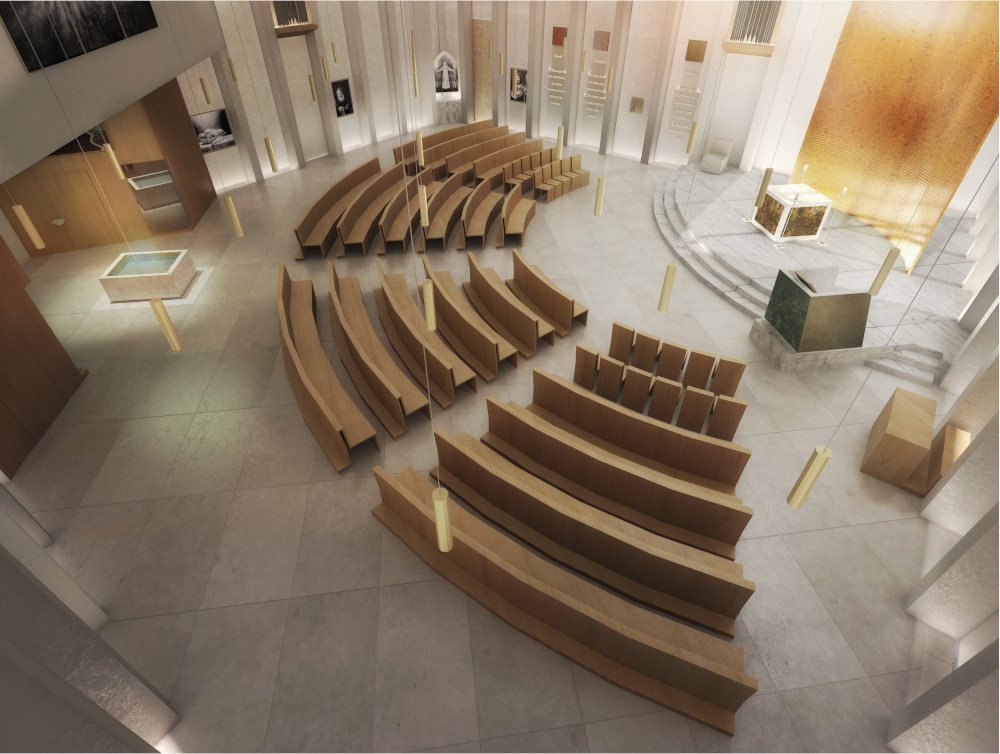
The ambo stands out to the south, narrating the parable of the sower; the location, to the north, with its position, makes the presbyter a listener, a teacher and a servant of the truth. The liturgical action takes life from the same gestures of the Christ in an inseparable interweaving with the architectural space and with the figurative narration: the rite, in its symbolic plot is made vital by space, colors and images. The final goal, the Heavenly Jerusalem, is imagined as a place of gold, resplendent with the glory of God.
Artwork
The pictorial path is expressed with traditional materials: on the boards, glazing on glazing, the layers of oil painting characterize the icons and symbols.
The artist elaborates an intense abstract impression, which is expressed in the continuous play of shadows and light, which outlines and defines faces, gestures, looks, signs capable of involving the community in a dramatic and collected way.
A second artist, chosen for the places, recovering the equally ancient mosaic technique, tile after tile, composes vibrant and harmonious images, even of large dimensions, such as on the altar and ambo, where, in the changing musicality of the materials, emerge the signs and symbols of faith.
Functional aspects
The first action is related to the churchyard, capable of evoking and aggregating. From here decisive paths unfold, both connecting to the outside and towards the interior spaces. A porticoed path connects all the spaces dedicated to the pastoral ministry. At the upper level, an additional space for aggregation, with pedestrian and experiential paths which, in connection with the connecting road, culminate in the semi-open summer chapel.
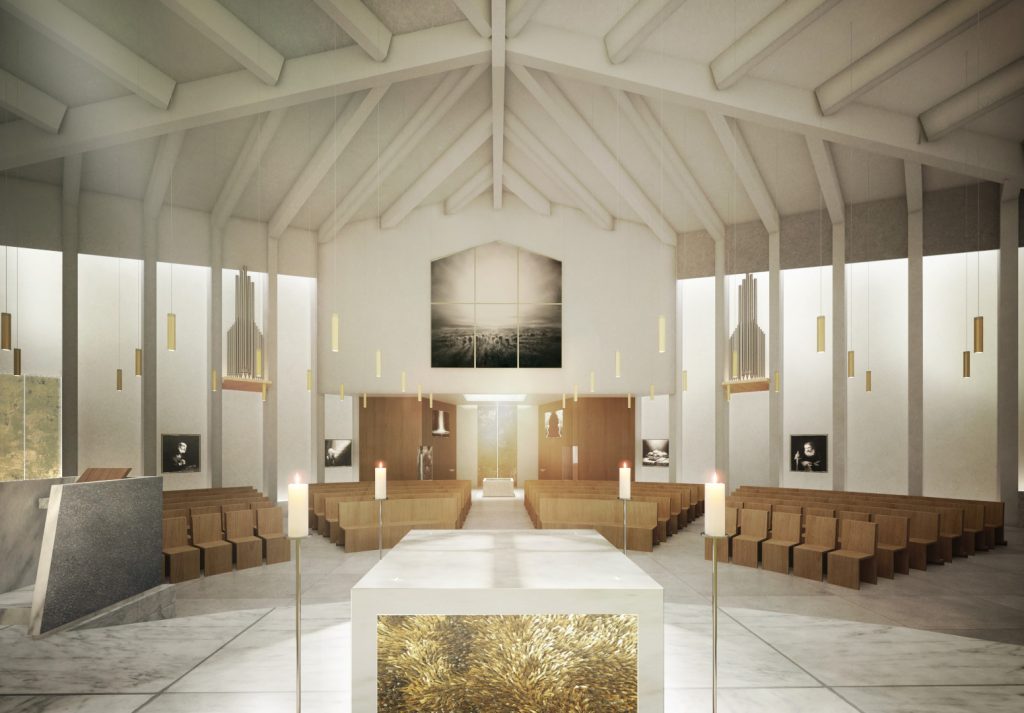
From this point, as from the churchyard, you will access the sacristy, parish archive, offices and services, also designed for the disabled.
From the churchyard and from the space in front of the weekday chapel, the multi-purpose parish hall will be accessible: underground, of a width equal to the liturgical hall, open on an external courtyard. The rectory, isolated and at the same time connected with the space below, stands surrounded by green spaces and terraces where it will be possible to cultivate essences that could give life to educational / aggregation workshops for the community.
Technological aspects
The architecture is integrated with features of high efficiency and environmental sustainability. The use of more renewable sources and local materials is proposed to contain construction costs. The plant systems are simplified. Water retention basins will be used to water vegetable gardens and gardens.
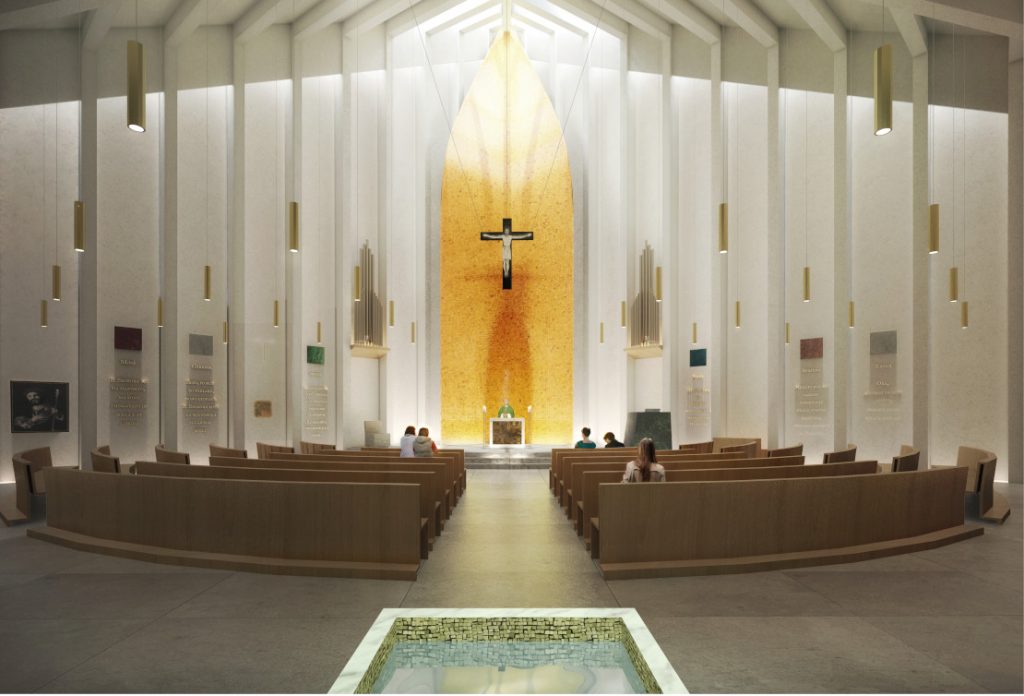
From a structural point of view, the church is mainly composed of a grid of reinforced concrete beams that define it both from a geometric and architectural / sculptural point of view. The repetitive pattern of the beam / column elements creates concrete portals of high rigidity and high structural efficiency; the proposed extrados portals are extremely efficient structures for which it can be reasonably assumed that reduced quantities of steel bars will be required (in the range of 100-150 kg / m ^ 3) and therefore it will be possible to guarantee high structural performance at relatively low costs for the architectural typology. Moreover, it should be emphasized that the proposed structure is highly hyperstatic, therefore, paying attention to the local and global design of the ductility of the structural elements, it will be possible to obtain a structure highly resistant to seismic actions, with high safety standards also with respect to actions more extreme.
Great attention will be paid during the final design phase to the optimization and reduction of the thickness of the concrete slabs constituting the horizontal (and in some cases vertical) surfaces of the structure, in order to reduce weight, costs and seismic masses. The proximity of the main portals should allow very reduced thickness of the slabs, probably in the order of 200 mm, with evident economic and functional advantages. Finally, as regards the foundations, from what emerged in the geological report, a direct superficial foundation for the entire structure can be reasonably assumed.
All materials used, as well as tree and shrub essences, will be local.
The organ is conceived from the beginning in its optimal location both from the liturgical-iconographic point of view and from the architectural and acoustic point of view. The soundproofing of the church is ensured by the particular attention paid to the church infill walls.
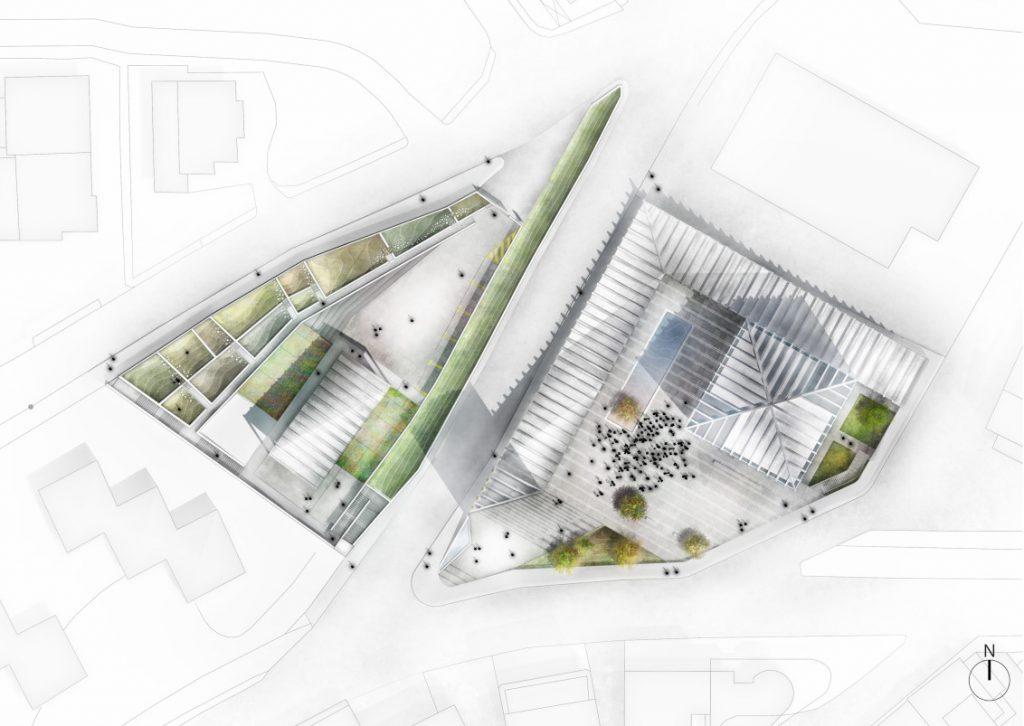
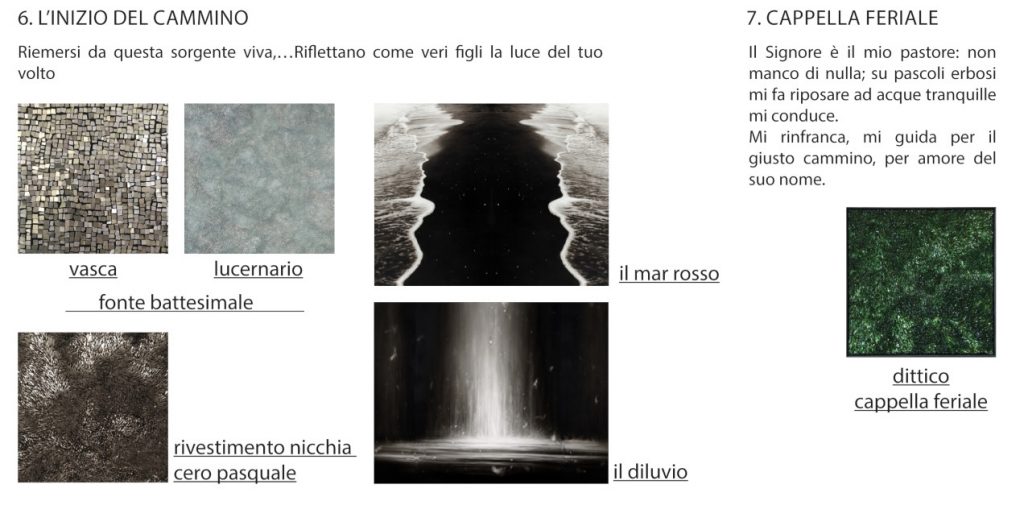
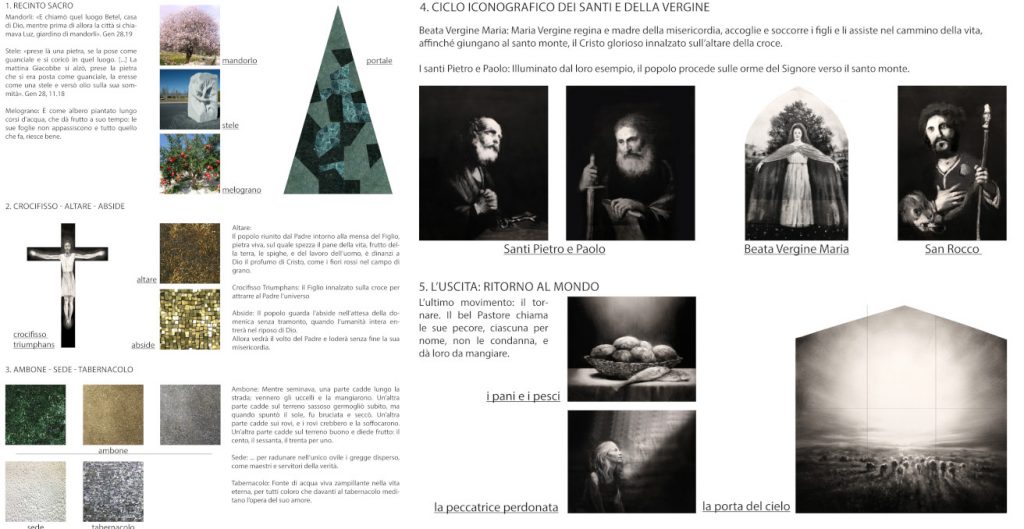
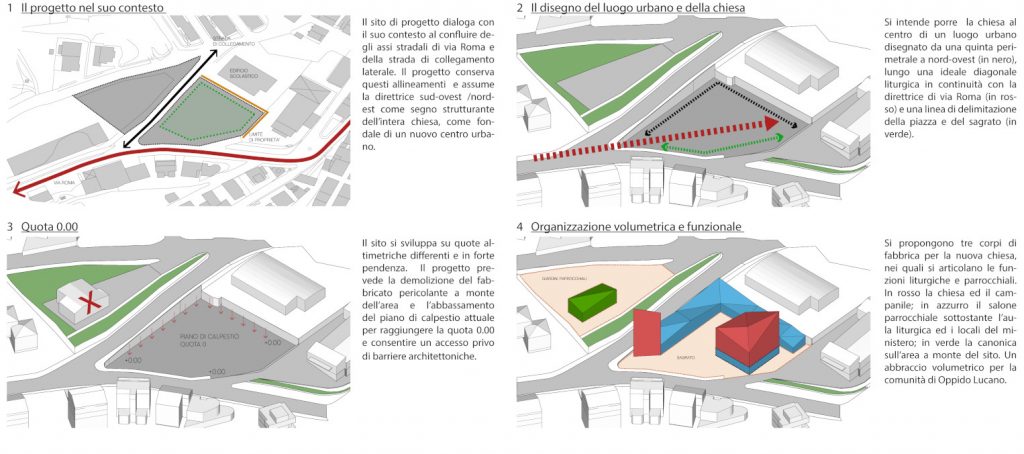
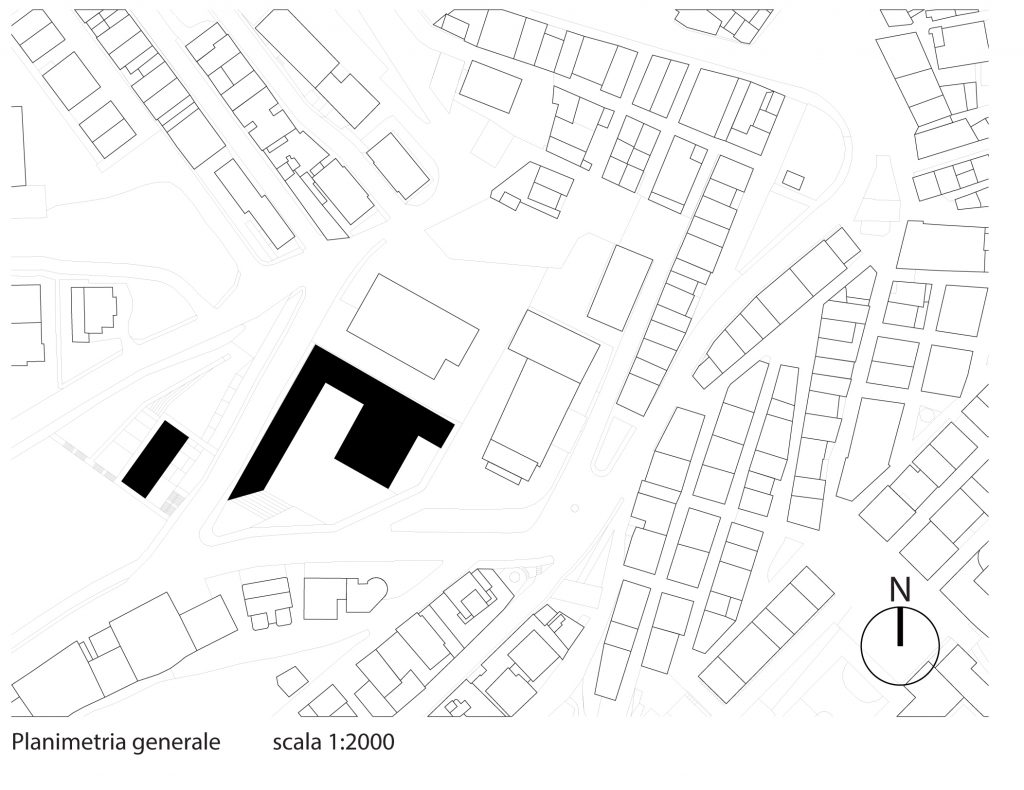
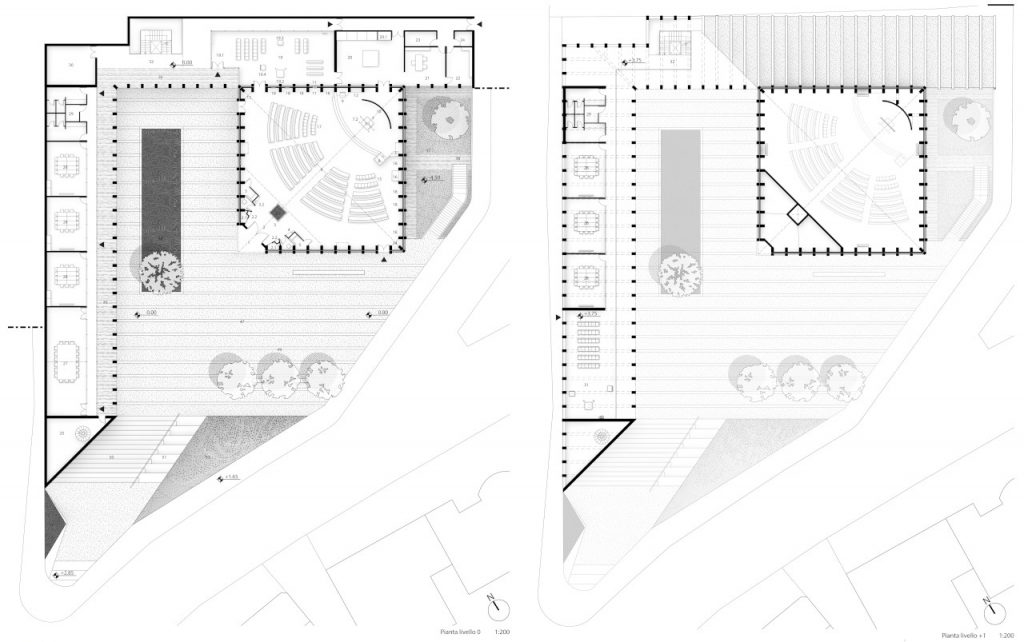
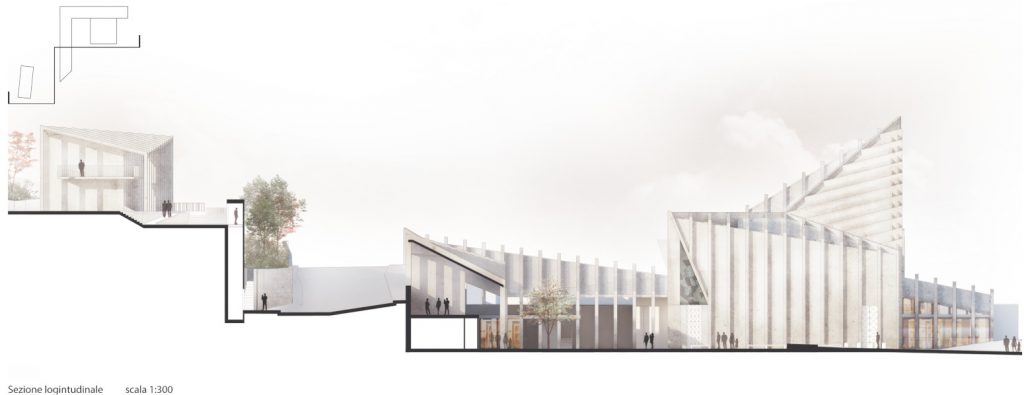
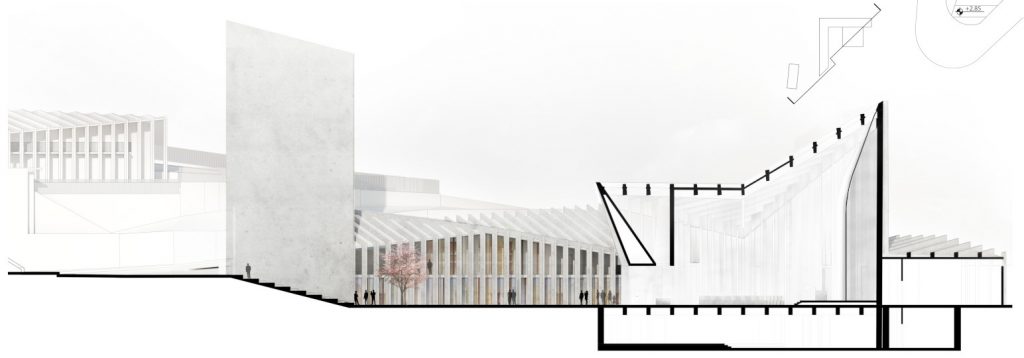
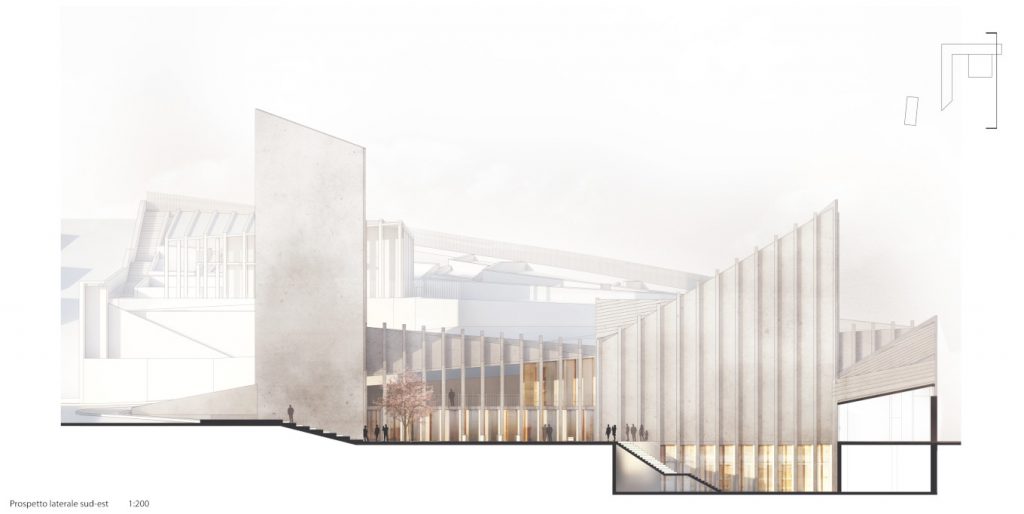
RABATANALAB
RABATANALAB is an interdisciplinary laboratory of experimentation on architecture and social connections. Founded by architects Daniele Molinari and Rocco Salomone, the studio collaborates with an external network of professionals for the development of architectural, urban planning and design projects. The activity integrates professionalism from various disciplines to ensure the excellence of the projects carried out, also for the technical aspects such as structural calculation.
Project information
Place: Oppido Lucano, Potenza, Italy.
Architectural project: Rabatanalab (Daniele Molinari, Rocco Salomone) + Francesco Paolo Zaccaro.
Design team: Paola Petroni, Domenico Monopoli, Sacha Gobelin.
liturgist: Francesca Leto.
Artistic consultant: Ilaria Bignotti.
Art project: Ettore Frani + Caco3.
Images and renderings: Giovanni Barbagallo.
Facilities: Felice Allievi.
Video editing and narrative voice: Luca Caricato, Giuseppe Mario Miseo.
Historical research: Danilo Loffreno, Donato Montesano.
Size: 1,000.0 m2
Year: 2018
State: National competition by invitation ..

